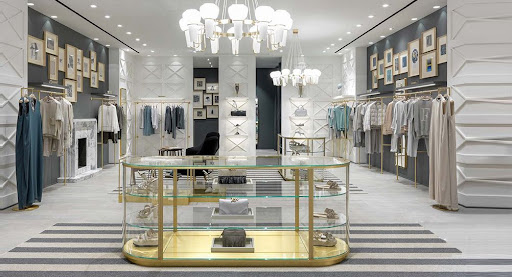
In the highly-competitive world of food and beverage businesses, creating an inviting and functional space for customers is crucial. This is where the art and science of shopfitting come into play. Commercial Shopfitting involves designing, constructing, and fitting out commercial spaces, such as restaurants, cafes, and food retail outlets, to ensure they are aesthetically pleasing, efficient, and aligned with the brand’s identity.
While shopfitting offers a unique opportunity to create a remarkable customer experience, it also presents many challenges that food and beverage businesses must navigate. This article delves into some of the most pressing challenges of commercial shopfitting for food and beverage enterprises.
Budget limitations:
One of the primary challenges food and beverage businesses face when embarking on a shopfitting project is the budget limitation. Creating an attractive and functional space that resonates with the brand’s ethos often requires a significant financial investment. Balancing the desire for high-quality materials, appealing design, and modern amenities within a limited budget can take time and effort. Businesses must carefully allocate resources to various aspects of shopfitting, such as interior design, furniture, equipment, and technology, while ensuring that the result justifies the expenditure.
Design and brand identity:
Developing a cohesive and visually-appealing design that reflects the brand’s identity is pivotal for food and beverage businesses. However, translating a brand’s essence into a physical space while considering the functional requirements can be challenging. The design should be aesthetically attractive and facilitate efficient staff workflow and an enjoyable customer experience. Balancing the aesthetics with practicality requires a delicate touch and collaboration between designers, architects, and business owners.
Compliance and regulations:
The food and beverage industry is subject to stringent health and safety regulations to ensure the well-being of both customers and employees. Shopfitting must stick to these regulations, which vary depending on the region and the nature of the establishment. Providing proper ventilation, sanitation, fire safety measures, accessibility for people with disabilities, and adherence to food handling guidelines are just a few of the compliance issues that must be addressed. Failure to meet these standards can result in costly fines, legal troubles, and reputational damage.
Project management:
Shopfitting projects can be complex and require effective project management to stay on schedule and within budget. Coordinating stakeholders, like architects, interior designers, contractors, and suppliers, demands meticulous planning and clear communication. Delays and miscommunication can lead to escalated costs, missed opportunities, and frustration for business owners and customers eagerly awaiting the establishment’s opening.
Sustainability and eco-friendly practices:
In an era of growing environmental consciousness, integrating sustainable and eco-friendly practices into shopfitting is increasingly important. Choosing environmentally-friendly materials, energy-efficient lighting, and water-saving fixtures aligns with consumer preferences and contributes to a positive brand image. However, finding sustainable solutions that are both cost-effective and readily available can be a challenge, as they often require research and may come at a premium.
Evolving technology:
Incorporating the latest technology into the shopfitting process can enhance customer experience and simplify operations. Digital menu boards, contactless payment systems, interactive displays, and advanced kitchen equipment can revolutionise food and beverage businesses’ operations. However, keeping up with rapidly-evolving technology trends requires careful consideration of long-term viability and compatibility with the overall design and concept.
Time conditions:
Time is often of the essence in the food and beverage industry. Shopfitting projects must be completed reasonably to minimise business disruptions and revenue loss. However, rushing the process can lead to bad results, compromising aesthetics and functionality. Striking the right balance between speed and quality is a challenge that requires efficient planning, skilled execution, and a contingency plan for unforeseen delays.Competition and differentiation:
In an oversaturated market, standing out from the competition is vital for food and beverage businesses. Shopfitting can be pivotal in creating a unique and memorable customer experience that sets a company apart. However, achieving this differentiation while still meeting the basic requirements of the establishment can be challenging. Creating a unique atmosphere that resonates with customers while staying true to the brand’s identity requires a deep understanding of the target audience and a creative touch.
Staff training and adaptation:
Implementing a new shopfitting design often requires a period of adjustment for the staff. New layouts, equipment, and processes can impact employee workflows and customer interactions. Ensuring the staff is properly trained to use new equipment, navigate the updated space, and provide an exceptional customer experience. With adequate training and adaptation, the potential benefits of a well-executed shopfitting project could be maintained by inefficiencies and customer satisfaction.
Maintenance and longevity:
A well-executed shopfitting project is not just about the initial design and construction; it’s also about maintaining the space’s aesthetics and functionality over time. Wear and tear and changing design trends can impact the appearance and efficiency of the establishment.
Regular maintenance, updates, and renovations are necessary to ensure the space remains inviting and aligned with the brand’s image. Balancing the need for longevity with the desire for a fresh and modern environment is an ongoing challenge for food and beverage businesses.
Customer feedback and evolution:
Customer preferences and expectations constantly evolve, and businesses must respond to these changes. Requesting and incorporating customer feedback can lead to valuable insights influencing future shopfitting decisions. Adapting to changing customer demands while staying true to the brand’s identity can be a delicate balancing act. The challenge lies in anticipating trends, gathering actionable feedback, and implementing changes that enhance the customer experience without disrupting the business’s core values.
Conclusion:
Commercial shopfitting for food and beverage businesses is a multi-faceted work that presents various challenges but great rewards when done properly. From budget constraints and design considerations to compliance with regulations and the integration of evolving technology, companies must navigate these obstacles to create an inviting and functional space for their customers.
Despite these challenges, successful shopfitting can lead to increased customer engagement, improved brand perception, and, ultimately, higher profitability. By carefully planning, collaborating with experts, and addressing each challenge with innovation and determination, food and beverage businesses can overcome the hurdles of shopfitting and create spaces that delight and satisfy customers for years.
